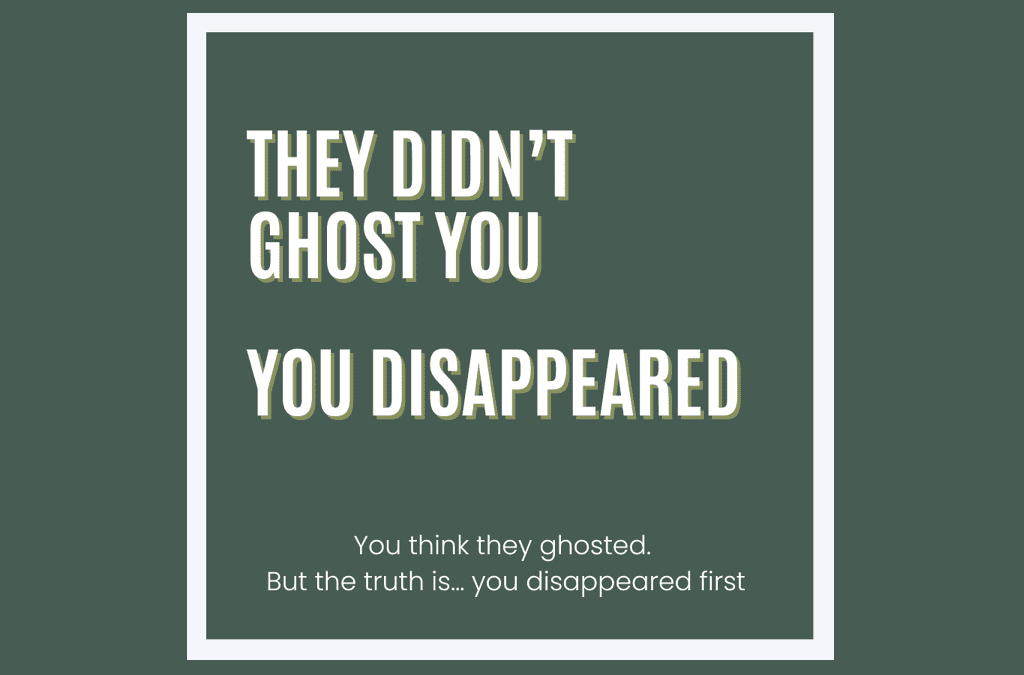They Didn’t Ghost, You Disappeared: How Follow-Up Failure Is Costing You Revenue
There’s a moment most business owners don’t talk about.
Not out loud. Not even to themselves.
It happens in that split second after they check their phone and see a missed call, or log into their CRM and realize there’s a message. An inquiry. A chance. And it was from two days ago. Too late. Can you relate?
Hypothetical #1:
Jessica had built her med spa from a side hustle in a rented room to a full-service studio with four rooms, three estheticians, and a waitlist that was, until recently, booked out two weeks in advance. She knew the name of every client. Knew which ones preferred hot towels and who always asked for lavender oil. She didn’t miss a thing.
Until she did.
It started small. A new client request that never got added to the calendar. Then, a series of DMs that her front desk never followed up on. Then, a review. Not nasty, but clear:
“I booked a consult. No one confirmed. Moved on.”
And just like that, someone who was ready to spend $1,800 walked into someone else’s building.
Jessica blamed the algorithm. Her social scheduler. The new girl.
But in her gut, she knew: it wasn’t them. It was her. Or more precisely, it was the absence of a system built for when she couldn’t be everywhere.
Hypothetical #2:
Across town, Marcus ran a staffing agency that specialized in construction crews. Drywallers, demo crews, general laborers. He knew his clients by name, including the contractors who called at the last minute when a crew walked off or a bid came through, and they had 48 hours to mobilize.
Then, one day, a lead came in. A new GC came through his website. Needed six guys for a six-week hospital wing expansion. Not huge, but solid.
The form was filled out at 6:12 p.m. on a Tuesday evening. Marcus, is a busy beaver, and he didn’t see it until Thursday morning.
By then, the job was gone.
$35,000 in billable hours, lost not to competition, but to silence.
You know this happens more often than any of us really care to admit. Not because business owners don’t care. Not because of laziness, inattention or too many new clients. (We wish!)
But because there’s no rhythm.
Inboxes become a black hole of scroll-throughs, deletes, and marked as important (that is a big haha). Memory becomes a fallible follow-up. A yellow legal pad becomes the heartbeat of customer management until that cold cup of morning coffee is spilled on those important notes and phone numbers. Or worse, writing on the back of an envelope very quickly makes its way unintentionally to the garbage. Poof… gone!
So, all that opportunity was lost simply due to an absence of processes… a big disappointment and a financial fail.
Every time.
What does the inaction on your part look like from where your prospects stand? That is the lead void paradigm, isn’t it! They reached out. You didn’t follow up, respond or act. Then you begin to rationalize so as not to address the gaps that just could not be your fault.
Enter Sales 101 Ghosting Myth.
“It was not meant to be”
“They must not have been serious.”
“They were probably just shopping.”
“Maybe they went with someone cheaper.”
But the data tells another story.
InsideSales found that:
- Calling a lead within 5 minutes makes them 8x more likely to answer compared to waiting just 30 minutes.
Brevet sales study showed that:
- 80% of sales require an average of five follow-ups in order to close the deal.
- However, 44% of sales reps follow up with a prospect only once before giving up.
- After four follow-ups, 94% of salespeople have given up.
It’s not ghosting. It’s neglect. That truth cuts deeper when you hear it from the buyer or in most cases, you hear nothing!
How about a real world example to make the point resonate?
Emily is a regional director for a chain of dental offices in dire need of IT assistance. She did the research, weeded out the firms that she felt did not serve her needs and reached out to two companies for more information on IT infrastructure. She wanted someone who could handle email security, backups, and HIPAA compliance.
- The first group emailed back with a calendar link within minutes.
- The second? “Thanks for reaching out, we’ll get back to you soon.” No reply for four days.
- The first group got the contract.
- The second never got a chance. Who wants to wait that long? After all, if a response from a prospect took four days, then how long would it take if they were clients?
The ones who win:
- Don’t do so because they have the fanciest software or the lowest price.
- They win because they follow up with structure.
- They don’t rely on their sales rep to “remember.”
- They build systems that work.
This isn’t about adding another platform, especially one that comes with a whole lot of instructions and not a lot of actionable tactics. It’s about ending the guesswork. Because when your system knows what matters, your team can stop reacting and start responding.
- Without structure, you’re not marketing or selling or growing. You’re decorating your inbox, bloating your social feed and praying someone sees it.
- Without task flow, you’re not managing leads. You’re just getting lucky—or not.
- And without communication logs, you’re not selling. You’re ghost hunting.
Want to know what real follow-up feels like?
It feels boring. Well, maybe not boring, but certainly less like you trying to tame a congregation of alligators. (BTW that is the correct word for a whole lotta gators in one place!)
Why?
- You automated.
- The task was assigned.
- It’s visible to everyone.
- It happens when it’s supposed to, not when someone remembers.
And boring closes deals.
- In more relatable terms, boring is consistent and timely and responsive. Because in the real world, the flashiest brand doesn’t win. The consistent one does. They are the company that follows up. The marketing department hands off the inquiries to the sales staff, who answer texts and schedules the appointments to close the deals. This is because the quote was sent, the meeting was scheduled, everyone showed up because they got reminders, so the discovery was completed and the accounting department sent out the invoice to get the client started.
- Everyone involved knows who said what and when. Everyone acted on the reminders, focused on the assignments and used the systems.
This is the company that is built for the next opportunity.
- This isn’t magic. It’s math.
- Structure beats memory.
- Visibility beats chaos.
- Rhythm beats hustle.
And leads?
- They don’t ghost.
- They drift away, until someone else catches them.
- So be boring, for pete’s sake.
To explain, here is what we mean by:
B.O.R.I.N.G.
Because Organization, Rhythm, Insight, and Next-steps = Growth
B – Because
Boring isn’t accidental. It’s intentional. It’s what happens because systems are built with purpose.
O – Organization
Every task tracked. Every contact assigned. No “I thought you had that one” moments.
R – Rhythm
Follow-up isn’t random. It’s rhythmic. Meetings happen when they should. Messages land with perfect timing.
I – Insight
You know who said what, who opened what, and what happens next. Visibility beats chaos.
N – Next-Steps
Automations trigger tasks. Reminders keep momentum. No dropped balls—just clean handoffs.
G – Growth
Not the flashy, break-your-back kind. The repeatable, reliable, compounding kind that happens when the backend actually works.
You’ve worked too hard to earn their attention only to lose it to silence.
- Fix the system.
- Keep the people.
- Fix the Follow-Up System. Get This Handled. Find Your Boring.





